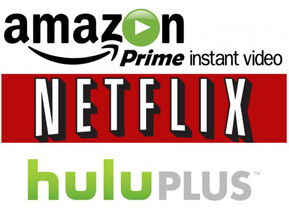Intermittent Issues: I, For One, Welcome Our New Binary Overlords
By Ben Gruchow
November 10, 2016
Netflix had an altogether bumpier start to its streaming protocol, ironically owing to the fact that it technically got the jump on Hulu. Netflix Streaming initiated in January 2007, but the avenues for consumers to take advantage of it were tentative and not particularly streamlined: users could opt for streaming technology instead of having discs mailed, but the model charged per minute of watching - essentially mandating that users deliberate over what to watch before actually choosing to watch it. The service also initially utilized Microsoft’s Silverlight DRM plugin for its streaming video, which created issues with viewing on certain browsers (it did not work with Google Chrome, for example). This was also the pre-app era: in order to work anywhere but on a computer, a user would need to own a dedicated piece of hardware. Netflix actually invested in this type of hardware before pulling the plug quietly on the unreleased “Netflix Box” in mid-2007, switching tracks to an initiative that had much more to do with getting the Netflix service supported by existing hardware - principally DVD and Blu-ray players (and given that it was 2007-08, HD-DVD players were occasional beneficiaries, too; no, I will not let it go).
The pivotal event in sustaining Netflix’s early exposure to streaming was arguably its 2008 deal with Starz to stream the channel’s movies over the service; this was a way to sidestep the problem of exclusivity deals that studios had signed with premium cable channels like Starz and HBO, and - via the streaming of Starz TV shows - also provided some early exposure to how serialized programming on a streaming platform might work. Starz saw a benefit by way of Netflix users becoming familiar with their existing TV properties in advance of the current season; Netflix saw the signs of an appetite for what would become known as binge-watching. It’s worth mentioning that, up to this point, binge-watching all of a TV show generally meant dropping between 20 and 50 dollars for each season on DVD or Blu-ray.
It took a couple of years, but in 2011 Netflix announced its intention to pursue original programming, at a price point much more palatable than cable for users and in a format almost unprecedented for the industry: each 13-episode season of an original program would be released all at once, not only allowing binge-watching but encouraging it. If there was a single factor that pushed streaming content into the mainstream while cementing Netflix’s place in it, original programming - beginning with Season 1 of House of Cards - was that factor.
Netflix is similar to Hulu in that it lacks a single set of standards with which to transmit A/V material; unlike Hulu, it fully embraces the upper limits of the H.26x standard. Rather than going between one SD and one HD resolution, and risking buffering of its most popular content, Netflix’s material runs a gamut from 320x240 right up to 1920x1080, via layering. Bitrate is selected through a truly clever algorithm that basically runs dozens of transcoding efforts on each title in their library, adjusting compression levels in minute increments until it arrives at the best tradeoff between quality and bitrate. Netflix also embraced HEVC once it was feasible to do so, which - as we well know by now - makes it possible to roughly halve the bitrate of a 1080p image without a perceptible loss in quality. The end result of this is an audiovisual experience that’s still dependent on bandwidth and thus not entirely consistent; it is not unusual for content on Netflix to occasionally fluctuate between high and low levels of quality and resolution in mid-watch. When the bandwidth is there and the coding algorithm is able to stretch its legs, though, it’s impressive.
Continued:
1
2
3
4
5
6
7




